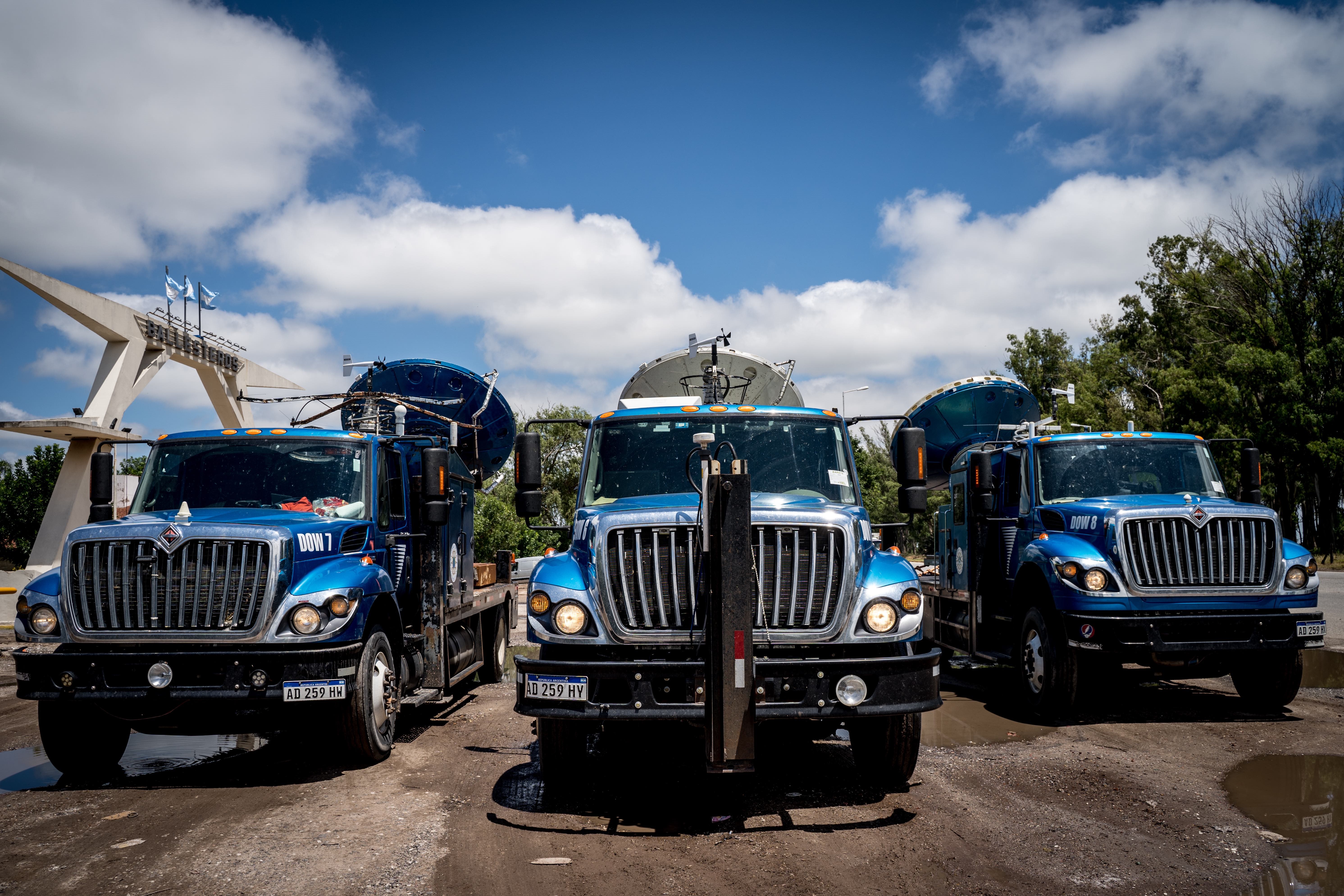
The Doppler on Wheels (DOW) mobile radar and instrumentation facility has joined the Department of Atmospheric Sciences at the University of Illinois at Urbana-Champaign.

We are sure you have many questions about what exactly this means for the department and university. So, included below are Jeff Trapp's (Department Head) answers to questions posed by Kimberly Wilson, a news writer for the College of LAS Office of Communications and Marketing.
- What equipment is included in the new Doppler on Wheels (DOW) mobile radar and instrumentation facility?
The facility includes: Three truck-mounted X-band radars (called the “Doppler on Wheels”, or DOWs), a truck-mounted C-band radar (called the “C-band on Wheels”, or COW), three vehicles equipped with meteorological sensors for observing meteorological conditions near the ground, three weather balloon launch systems, a mobile coordination center, and miscellaneous other ground-based meteorological sensors.
- What is the significance of this addition to the department?
It’s transformative! It’s unmatched! At no other university do students and faculty have access to cutting-edge meteorological resources of this scope. Indeed, equipment normally reserved for special, organized field campaigns is now at our ready disposal for instructional use in classes, demonstrations to schools and the community, impromptu deployments to sample a rare weather event, and planned, longer-term deployments to collect data for hypothesis testing. We’re also excited to begin exploring other uses of the facility such as with private industry.
- How will this facility be utilized? Will it be housed on campus?
Once we identify appropriate garage space (and the COVID-19 restrictions ease), some of the equipment will be housed in Champaign-Urbana. When not in use for field campaigns or for outreach activities, the remainder of the equipment will be based in Boulder, Colorado, where the support and maintenance crew resides.
- What kind of new research projects will this facility aid?
In the past, the facility has been used for studies of tornadoes, hurricanes, and severe thunderstorms, and this type of research will continue into the future. For example, Adjunct Prof. Karen Kosiba, Prof. Steve Nesbitt and I are PIs of a proposed multi-institutional field campaign that aims to better understand tornado formation within lines of thunderstorms known as quasi-linear convective systems. ATMS faculty are also using facility data for research on snowfall generation in association with the Rocky Mountains as well as the Great Lakes, and future research on the latter topic is planned. Other projects discussed by the ATMS faculty include a deployment of the DOWs to Chicago to study urban effects on precipitation. We look forward to exploring the collaborative use of the facility by other faculty and scientists across campus.
- How will undergraduate and graduate students benefit from this facility?
We will incorporate the use of the radars and the other instrumentation into our undergraduate and graduate classes, which will allow the students to gain unique, hands-on experience with the equipment. Both within and outside of these classes, we will also be encouraging the students to develop field deployment plans so that they can pursue collaborative research interests. Finally, because the equipment is frequently used in domestic as well as international field campaigns that require student operators and assistance, our students will be presented with new opportunities for field-campaign participation. These are life-changing experiences, resulting in the establishment of peer and professional networks, unique training toward future employment, and exposure to different cultures and people with diverse backgrounds.
- How much did the new facility cost? How did the department raise funding for the facility?
The department doesn’t actually own the multi-million dollar facility, but instead has acquired it through a long-term contract. The contract is currently financed through internal departmental funds, but soon will be supported through external research grants through the National Science Foundation, other government agencies, and hopefully private industry usage and sponsorship.
- How will the facility aid with outreach and inclusion efforts in the department?
The facility has a long history of outreach events ranging from single-day demonstrations at K-12 schools, to multi-week educational deployments at colleges and universities across the country. We are excited to continue these types of events, but additionally are now planning new activities such as locally-based summer academies for underserved undergraduates in the tri-state region, and similar institutes at Tribal Colleges and Universities.
For more information, please visit the DOW's website, here.